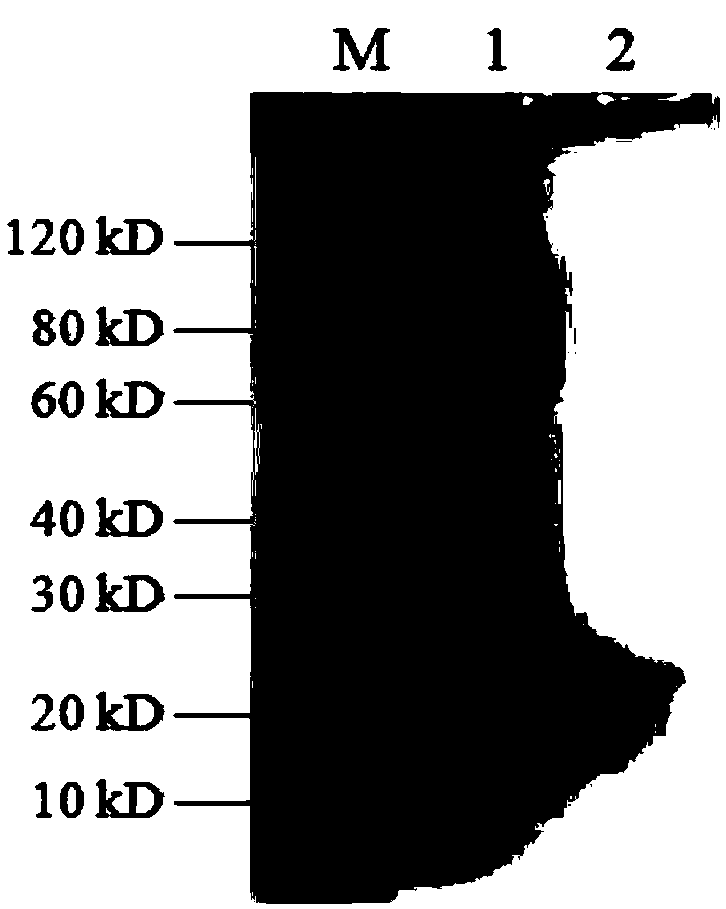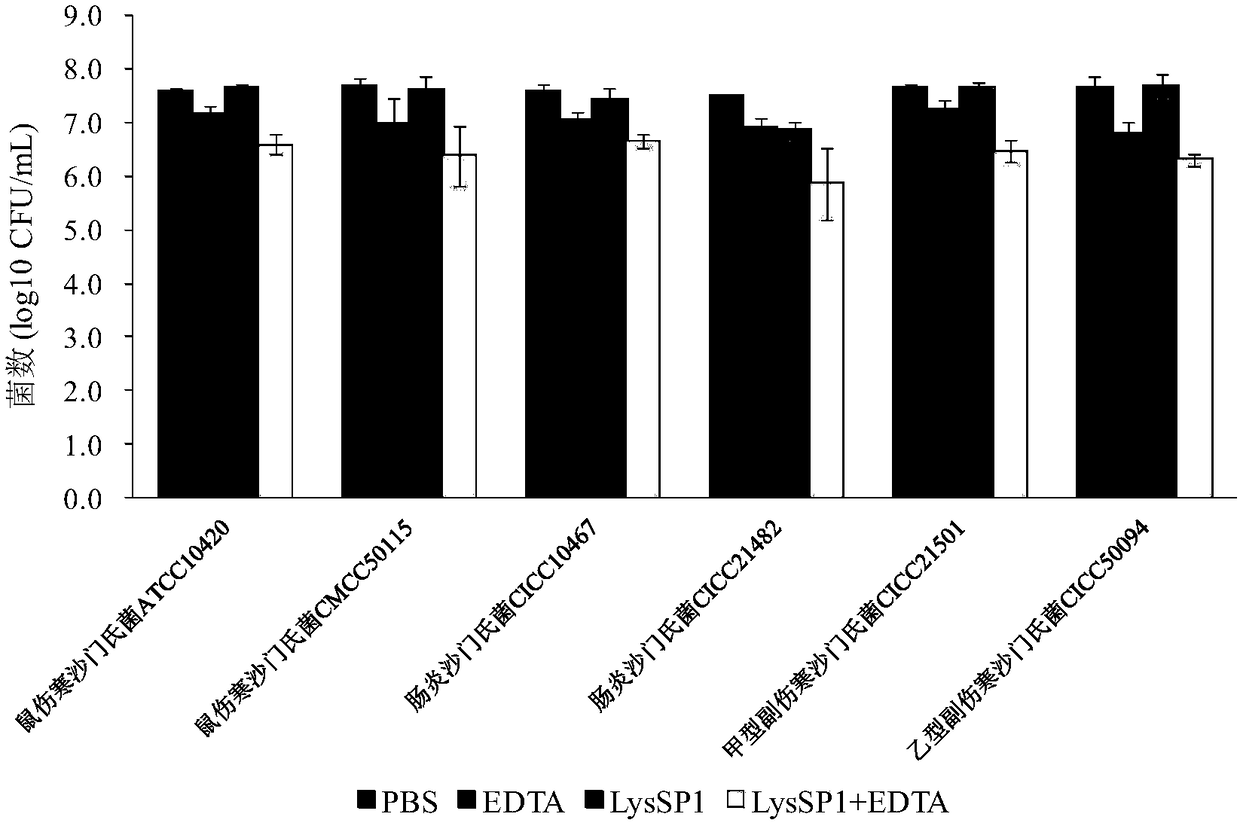Broad-spectrum lyase derived from salmonella bacteriophage and antibacterial application thereof
A bacteriophage lyase and salmonella technology, which is applied in the field of broad-spectrum lyase and its antibacterial application, can solve the problem of inability to kill gram-positive bacteria and the like, and achieve the effect of significant bactericidal effect
- Summary
- Abstract
- Description
- Claims
- Application Information
AI Technical Summary
Problems solved by technology
Method used
Image
Examples
Embodiment 1
[0030] Example 1: Extraction of Salmonella phage SLMP1 genome
[0031] 1. Preparation of Salmonella phage SLMP1 particles
[0032] A single colony of Salmonella (ATCC14028) was picked from the solid medium, inoculated in 15 mL of LB liquid medium, and cultured with shaking at 36°C for 6-8h. Pick a single phage plaque of Salmonella phage SLMP1, inoculate it in 15mL logarithmic growth phase host bacterial culture solution, culture it with shaking at 36°C for 4-6h, then centrifuge the lysate at 8000rpm for 10min, and filter the supernatant with a 0.22μm filter membrane , which is the pure culture medium of phage. Transfer the overnight cultured Salmonella to 400mL liquid LB medium with an inoculum size of 1%, cultivate to the logarithmic growth phase, add 10mL phage pure culture solution, and shake the culture until the host bacteria are lysed and become clear. Add DNase I and RNase A to a final concentration of 1 mg / L, and incubate at room temperature for 30 min. Add NaCl (fi...
Embodiment 2
[0035] Example 2, functional annotation of lysase gene lysSP1
[0036] Send the extracted phage genome DNA to the biological company for whole-genome sequencing, use the RAST tool to perform gene prediction on the genome, convert the predicted ORF sequence of the sample into a protein sequence through the transeq program in EMBOSS, and compare the protein sequence with public data , through homology analysis, it was found that the amino acid sequence (SEQ ID No.1) encoded by the gene (SEQ ID No.2) had a high similarity with the lyases of multiple Salmonella phages. At present, there are no research and application reports on these highly similar lyases.
Embodiment 3
[0037] Embodiment 3, the construction of recombinant plasmid
[0038] 1. Amplification of the lysase gene lysSP1: design primers according to the lysSP1 sequence (SEQ ID No.2), add double restriction sites BamH I, Hind III and protective base TTT at the 5' end, upstream primer: 5'- TTTGGATCCatgtcaaaccgaaacatcag-3', downstream primer: 5'-TTTAAGCTTctttgccgcgcgccctac-3'. PCR was used to amplify lysSP1, and electrophoresed in 1.5% agarose to identify the size of the amplified fragment. At the same time, the amplified product was sent to the biological company for sequencing, and the amplified fragment was determined to be the target fragment.
[0039] 2. TA cloning of the lysase gene lysSP1: recover the PCR product with a gel recovery kit, mix it with the pMD18-T cloning vector, transfer it into 100 μL E. coli DH5α competent cells, and place the mixture on ice for 30 minutes at 42°C Heat shock for 45s, then place on ice for 1min, add 890μL LB liquid medium, shake and culture at ...
PUM
 Login to View More
Login to View More Abstract
Description
Claims
Application Information
 Login to View More
Login to View More - R&D
- Intellectual Property
- Life Sciences
- Materials
- Tech Scout
- Unparalleled Data Quality
- Higher Quality Content
- 60% Fewer Hallucinations
Browse by: Latest US Patents, China's latest patents, Technical Efficacy Thesaurus, Application Domain, Technology Topic, Popular Technical Reports.
© 2025 PatSnap. All rights reserved.Legal|Privacy policy|Modern Slavery Act Transparency Statement|Sitemap|About US| Contact US: help@patsnap.com



